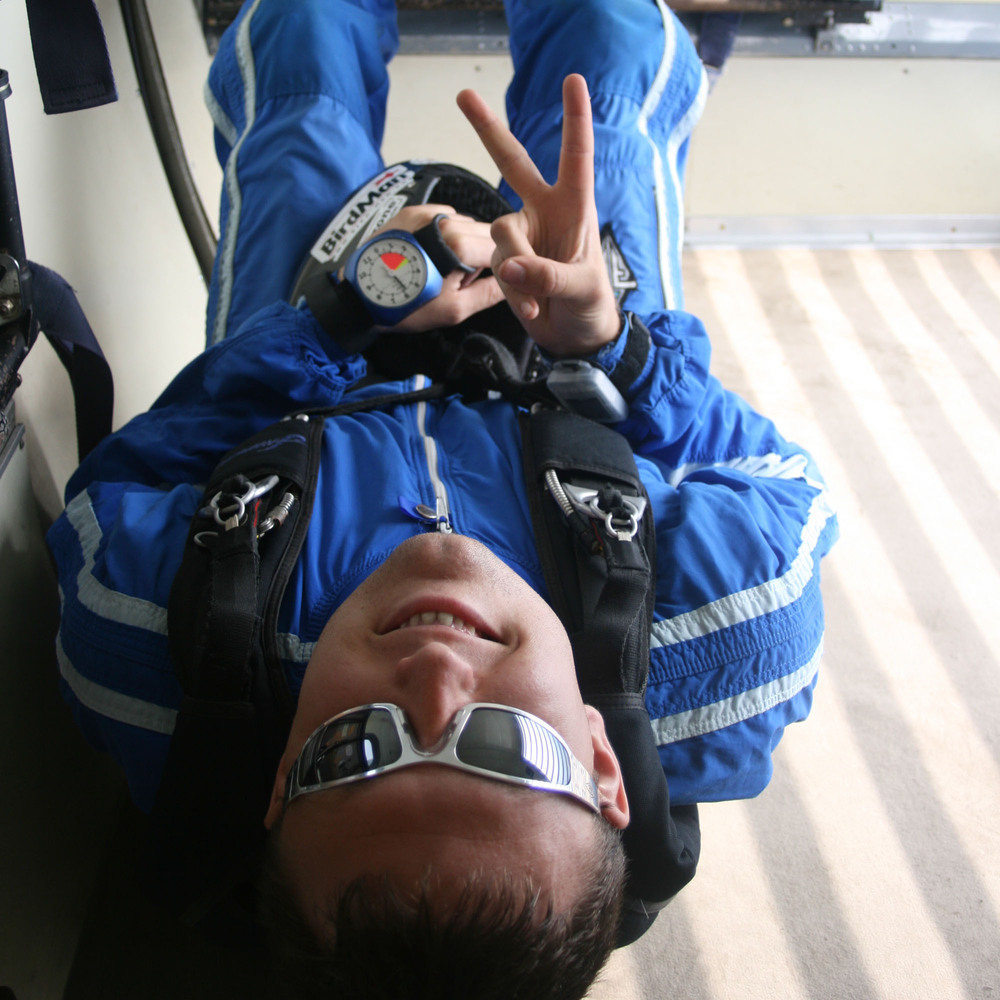Recommended Posts
freebird 0
would tend to think that 4000 feet qualifies as a high puller - thoughts? ***
I am willing to pull at 3500. I do not and will not pull any lower then that until I feel ok with that. I will line up where I need to be inform jumpers on the oplane where my pull time is and we can come to a decsion of when I need to exit.
If high pullers or before AFF and tandems then I will be going before the high pullers and we need to talk and decide where we want to pull. I will pull no lower then 3500 for now. ![]()
freebird 0
snivelly canopies aren't willing to go to 2000 feet. ***
I have a Sabre 2. Yes I have one of those snivel canopies and 2000 is too low, for now for me.![]()
billvon 3,118
To me, it's someone pulling at least 2000 feet above the previous group. If the RW folks are going to pull at or below 2500, then 4500+ is high puller. That way a pull at 3000 by an RW person plus a snivel down to 3500 by the high puller still gives you some separation. Note that a cutaway totally hoses this up so you can't rely on it as your only separation.
freebird 0
large RW -2000
small RW 3000
solo belly 3500
freeflyers 4000
high pullers4500-5000
tandems 6000
AFF 5000-4000
Is this a correct pull order or not?![]()
mattb 0
Although RW jumpers often pull lower than freefliers that is not an absolute. Exit order is based on time aloft so that groups don't drift over on another.
Quotelarge RW -2000
small RW 3000
solo belly 3500
freeflyers 4000
high pullers4500-5000
tandems 6000
AFF 5000-4000
Is this a correct pull order or not?
PhreeZone 20
Small RW
Solo flat
Freeflyers
Highpullers are above 5000
Students
Tandems with video
Tandems with out
The vertical pull is really useless with different groups.
And tomorrow is a mystery
Parachutemanuals.com
Quotelarge RW -2000
small RW 3000
solo belly 3500
freeflyers 4000
high pullers4500-5000
tandems 6000
AFF 5000-4000
Is this a correct pull order or not?
You're likely confusing the break off altitude differences between the RW groups and the freefliers. Freefliers need to slow down before we pull and thus break off and track much higher than RW groups.
Try not to worry about the things you have no control over
AndyMan 7
Quotelarge RW -2000
small RW 3000
solo belly 3500
freeflyers 4000
high pullers4500-5000
tandems 6000
AFF 5000-4000
No. RW guys rarely pull bellow 2500, and nobody ever encourages anyone to pull bellow 2000 - unless it's a VERY big RW (100+).
Freeflyers rarely pull above 3000. They certainly don't tend to pull at 4000. Freeflyers generally pull at about the same altitude as RW jumpers.
That said, people with very high performance canopies sometimes like to pull a bit higher so that the air is clear for their swoop.
RW and freeflyers generally pull at about the same altitude. freeflyers might pull a bit higher because I think there's a higher concentration of high performance canopy fliers.
Verticle separation is not a significant part of the exit order, apart from students and very high pullers going out last.
_Am
You put the fun in "funnel" - craichead.
freebird 0
Large RW
Small RW
Solo flat
Freeflyers
Highpullers are above 5000
Students
Tandems with video
Tandems with out ***
Yes this is how my home DZ does it with tandems going last.
I just wanted to see if its the norm for a solo belly flyer to jumper before freeflyers![]()
skr 1
The way I explain it to our students is here
http://indra.net/~bdaniels/ftw/cc_separation_summary.html
To get some first hand experience do some solos.
When the group in front of you goes, move to the door,
keep your eye on the group in front of you, use one of
the techniques people have mentioned in this thread
for getting separation and then jump out.
In freefall keep your eye on the group in front of you
and notice stuff, freefall drift, landmarks, how hangars
and runways and cars and trees and stuff look at various
altitudes.
How does your position change relative to the group
in front of you? If you're too close on top of them, you
can break a couple thousand feet early, and track
perpendicular to the jump run to make some room.
If your distance is OK, then watch them break and open.
That's pretty interesting in itself, and you also get quite
a rush of speed, it's almost as good as a cloud.
Now the important part is to start relating what you did
in the door before exit to how much actual separation
you got on the bottom end.
This takes a number of jumps in various combinations
of upper and lower winds.
It's not a particularly easy skill to develop, but it's worth
the effort.
----
Opening higher than the generic altitude matters if the
people behind you on exit don't give proper separation,
or if the spot is off and there are hazards, or if another
plane full of jumpers is coming overhead in a couple
minutes.
I pull higher now than I used to.
The people who taught me pulled at 1,000 ft plus or minus.
I was taught to pull at 2,000 ft. I pull closer to 3,000 now
because I'm older and slower and today's chutes take
forever to open.
Sometimes I'll pull a little lower down at sea level drop
zones like Eloy where the air is so thick you almost
don't need a rig :-) :-)
Skr
billvon 3,118
Well, they're close, but no one follows such a plan just because it's a plan. Some freeflyers pull at 2000; some RW types pull at 3000. Tandems and AFF are nearly always 4000-6000 feet.
tombuch 0
Quote
A standard exit lineup would be:
large RW
small RW
solo belly
freeflyers
high pullers
tandems
AFF
Why tandem before AFF? My general feeling is that with a drogue out the tandem pair is a sitting duck, and nobody other than tandems should be following them. Likewise, if the spot is long it's easier for tandems to get out late, and perhaps even on a 180, but that's tougher for an AFF student to handle. My preference is for tandems to be last-last. Thoughts?
-tom buchanan
Instructor Emeritus
Comm Pilot MSEL,G
Author: JUMP! Skydiving Made Fun and Easy
billvon 3,118
Yep, my mistake - we put tandems after AFF as well. I was thinking of some instances where we knew AFF would be a separate pass anyway so the tandems got out first, but that's unusual.
Ron 10
Quote
Replying to:
Re: [mattb] Knowing your position by CanuckInUSA
Post:
I would think that 2500-3500 is normal and from what I've seen 4000 is high. That's
why it's nice to try and encourage the person to pull at 3500 so as not to disrupt the
RW/Freefly order.
Don't try to "encourage" people to do something they don't want to do....Just because you feel safe does not make it safe for everyone.
Luminous 0
QuoteRW guys rarely pull bellow 2500
Maybe you should insert "at my DZ" somewhere in there.



.thumb.jpg.4bb795e2eaf21b8b300039a5e1ec7f92.jpg)

Try not to worry about the things you have no control over
Share this post
Link to post
Share on other sites